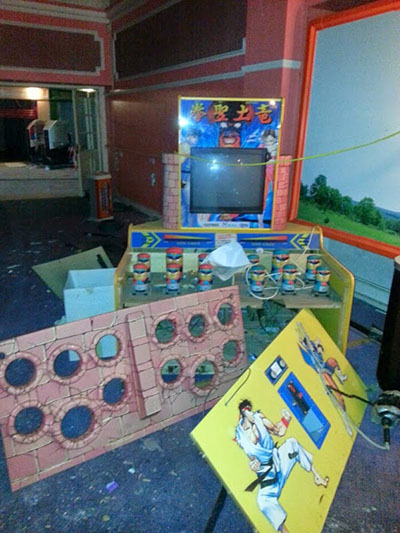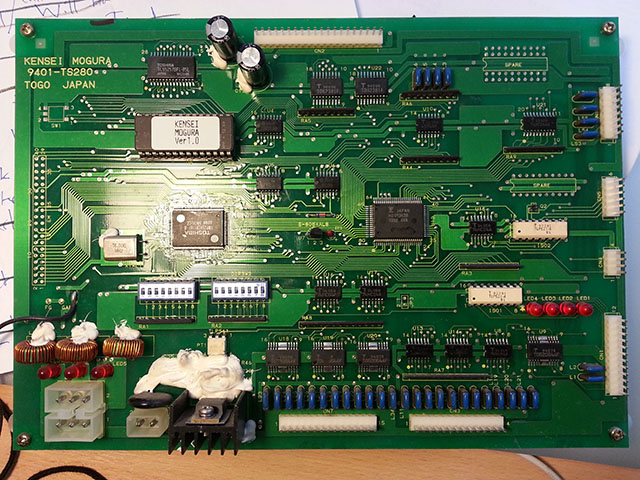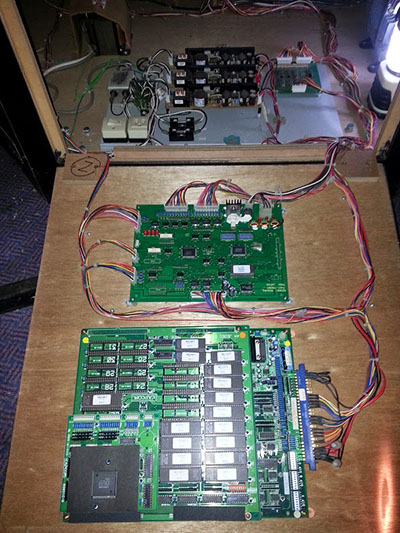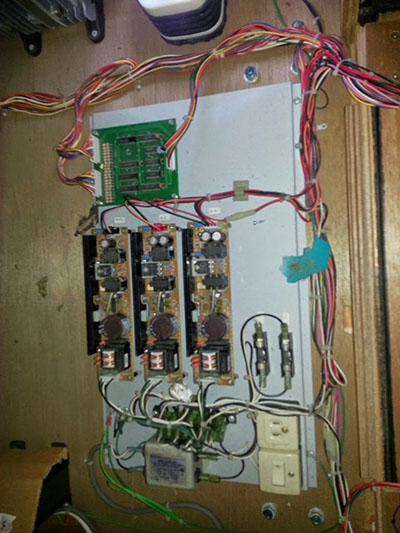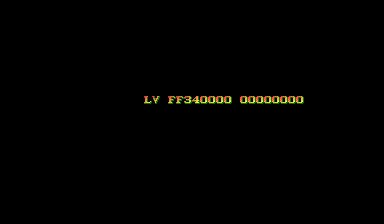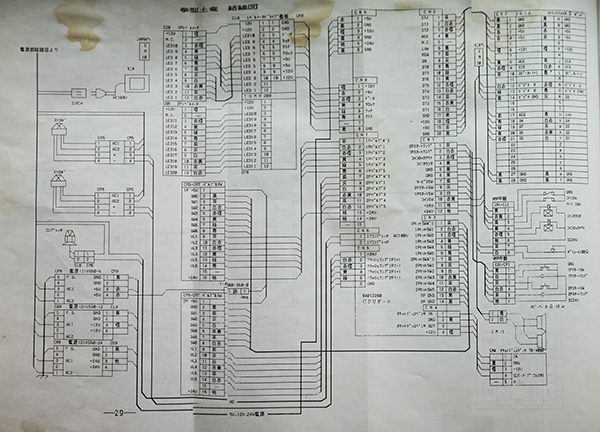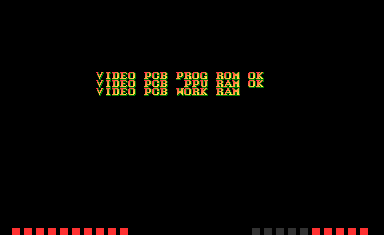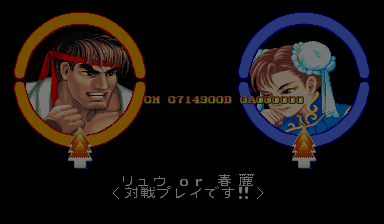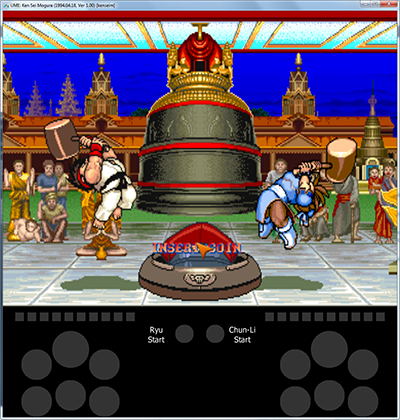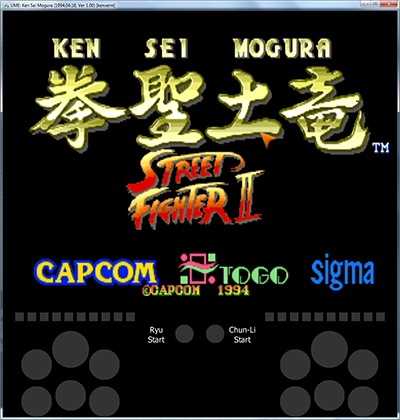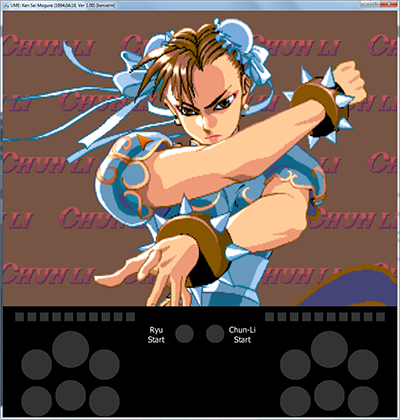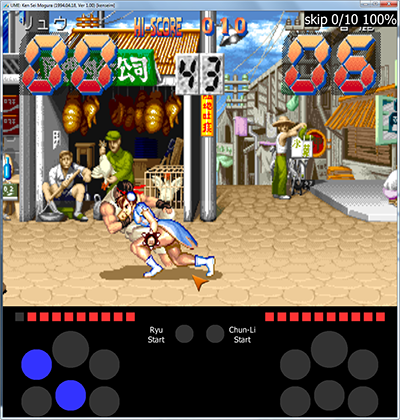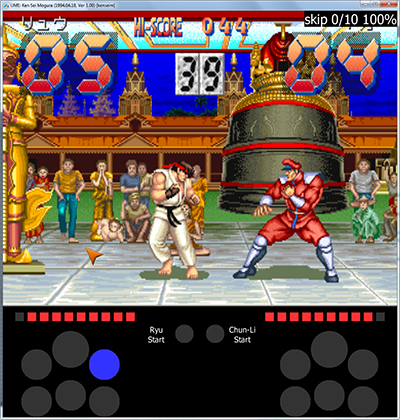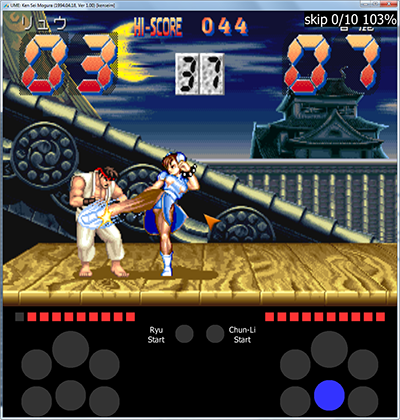
UME is the complete/combined version of the MAME / MESS project.
I’ve noticed some interest in the Ken Sei Mogura update below, but so far hadn’t got around to posting a binary with support for it. UME 0.153ex5 has support for the aforementioned title (along with a better internal layout from hap) in addition to a number of other things I’ll cover later.
DCS sound system based games (eg. Carnevil, California Speed, NFL Blitz) have been broken since the DCS based Williams Pinball display drivers were improved so I was hoping to see that fixed before issuing a new update, but it hasn’t yet happened; hopefully it will be fixed before there is an official 0.154 release (probably still a month away at least)
0.153ex5 is built from SVN revision 31072
UME 0.153ex5 Windows binaries – 32-bit, 64-bit and all tools
UME 0.153ex5 sources
Here is the 0.153ex4 to 0.153ex5 SVN log
Other Binaries (if you don’t know what these are you don’t need them)
MAME/MESS split 0.153ex5 Windows binaries – 32-bit, 64-bit and all tools
UME/MAME/MESS split 0.153ex5 Windows *SDL* binaries – 32-bit
UME/MAME/MESS split 0.153ex5 Windows *SDL* binaries – 64-bit
Points of Interest
We’ve seen a number of prototypes show up over the last few years, some of them early builds, some of them almost indistinguishable from the final versions of the game. Another one so far falling into the latter category is a Raiden Fighters SPI Cartridge. ‘Karen’ found this version of Raiden Fighters and it displays an interesting message on the title screen ‘EVALUATION SOFTWARE FOR SHOW LICENSEE TUNING – GERMANY’. This message is present in the ROMs for all versions of the game, however it isn’t usually used. We know TUNING licensed a lot of Seibu’s games (including the Raiden Fighters games) for use in Germany, so it makes sense that them might have been sent preview versions. What makes a little less sense is that the board is an Australian region board (according to the region byte) and was found in Australia.
It would be easy to write it off as some kind of hoax / hack, but the actual codebase is clearly a different revision than any of the previously supported sets at least, so it’s definietly not a cheap hack of a set we already know about, and could actually be earlier code, although so far we’ve been unable to identify any actual differences in the gameplay so it’s probably close to the final, or maybe even a later revision than those used in Japan if it was sent for evaluation after the actual Japanese release. I do hope somebody attempts to identify all the differences in the various Seibu revisions one day because most of their games have a number of builds.
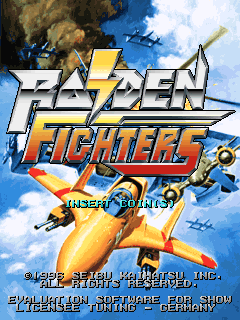

Along similar lines what appears to be a ‘close to final’ US / World revision of Galaga 88 was found / dumped by Andrew Welburn. There are only a few differences between the ROMs found on this PCB and the final PCB but all the ROMs were hand-dated and in one of the graphics sockets there was an extra rom containing only the fonts and a few other characters – it has the earliest date and is probably a leftover from an earlier point in development because the game doesn’t seem to use it.
An early revision of Peek-A-Boo was also dumped. The ROMs on this one were marked as ‘Version 1.0’ and the title screen indicates that it’s a US set. Furthermore the game seems to be a ‘Paddle Only’ version because enabling the dipswitch for ‘Button’ mode causes the game to enter a debug menu after a few seconds. (This needs further investigation tho)
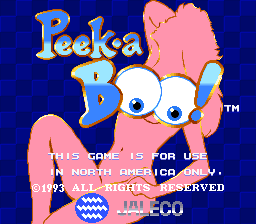
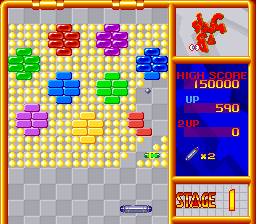
— early Joust 2
— early Knights of Valour Super Heroes
One fix that is likely to be overlooked by the majority is the one made to the Amiga emulation allowing the Arcadia game Space Ranger to function correctly. Space Ranger has been marked as ‘Working’ in MAME for a long time, but was another case of a driver being marked as working prematurely. To play the game you need 2 buttons, and for the majority of Arcadia games both buttons worked, however in Space Ranger the 2nd button didn’t, meaning you couldn’t use the net to capture / rescue the creatures along the bottom. It turned out to be an issue with the emulation of an internal timer, so hopefully the fix has also improved some Amiga titles where inputs weren’t responding correctly. Along with coming up with this fix Duke has also continued to improve other areas of the Amiga emulation although it still struggles with most copy protected software.
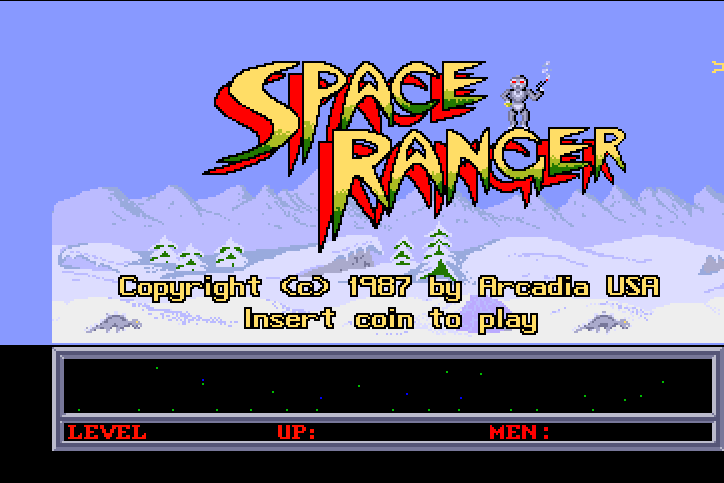
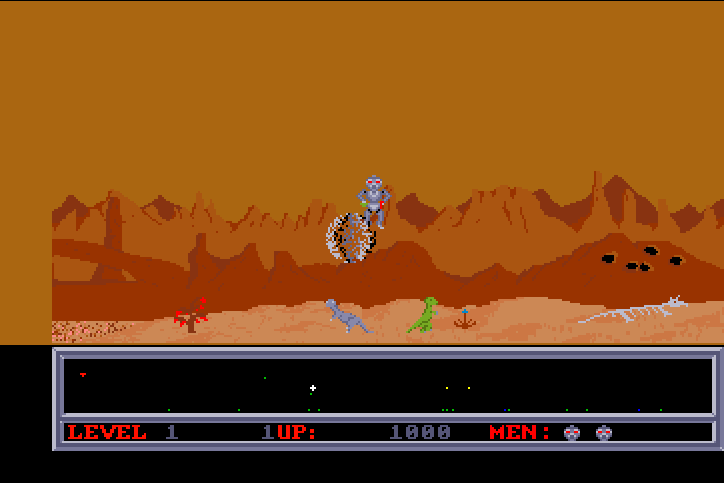
The steady flow of Spanish versions of games continues, this time with a professionally made (possibly licensed) version of Space Invaders from Electromar. This has all the texts translated and even has a nice touch in that the Invader steals the ‘M’ of ‘FIM’ and replaces it with ‘N’ as opposed to replacing an inverted ‘Y’ of ‘PLAY’ in the regular versions. You can thank Roselson of AUMAP for finding this one.
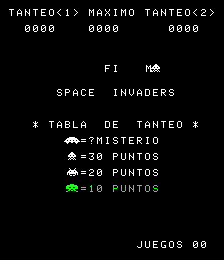
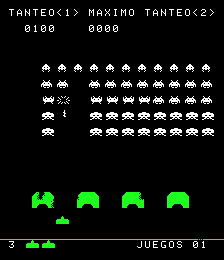
Another interesting finding was made when Artemio dumped his 2 Crude Dude board. Quite often when people dump boards they take a rather lazy approach of dumping only the program roms, even in cases where other roms are socketed. What Artemio found is that later revisions of 2 Crude Dudes are meant to use an updated tile rom, with some changes to the Japanese characters. His actual board was a US version so these tiles are unlikely to be used on it, but after looking at some photos it appears the later Japanese versions should also use this revised rom and were not doing so.
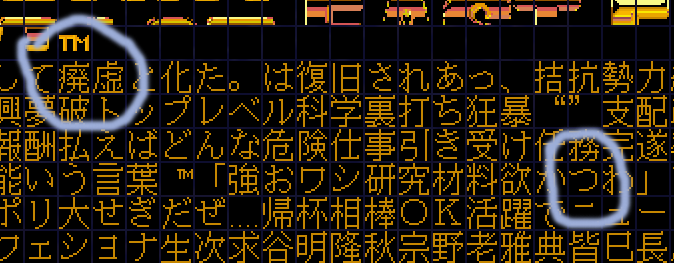
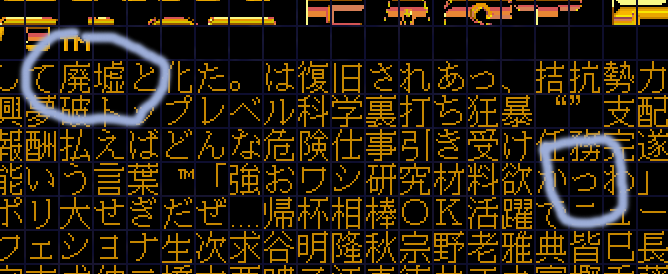
I mentioned hap improved the Kensei Mogura internal layout a bit, this is how it looks now

– Sinclair QL work
– x68K blending work + other fixes
– Konami cleanups
– More MSX improvements
– Better Namco System 1 memory maps
One from the ‘requested at a timely moment’ department is the fix made to Super Volleyball. A number of gameplay elements were missing, such as marker arrows, player hints and the confetti after scoring. The fix was actually simple, the bug was caused by an incorrect loading of the sprite roms, meaning it WAS drawing those elements, just with blank tiles. Fixing it turned out to be nice and easy. I don’t know if it’s always been like this, or regressed during other cleanups. Fixed now anyway.
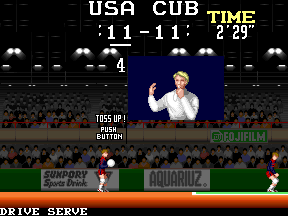
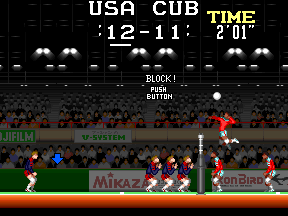
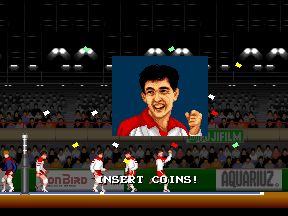
The recent work by Roberto caught my eye too, we’ve known for a long time that there were some other ‘games’ on Cherry Master hardware and his most recent update shows emulation of two of them. Tetris and Pacman.
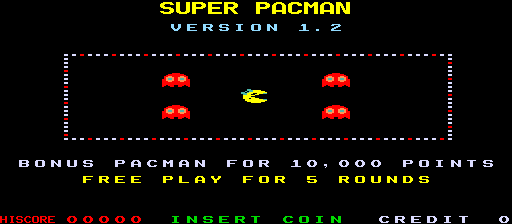
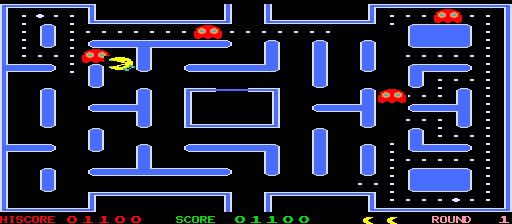
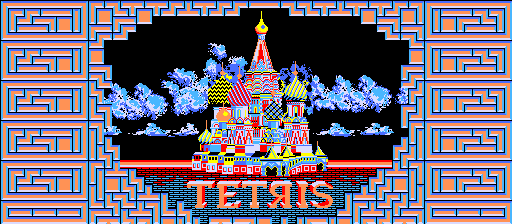
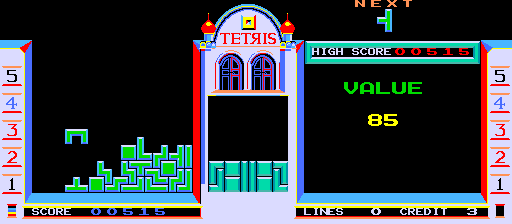
Now you’re not going to want to actually play either of those. The Tetris version is criminally boring, the playfield is so wide you’ll have hit the quit button long before you’ve filled a line and the aspect ratio is just odd. Pacman isn’t much better, on my first play I managed to glitch the game so that one of the fruit items was stuck on the screen, couldn’t be collected, and wouldn’t disappear, furthermore the ghosts tend to move mostly at random but usually end up simply blocking your access to the power dots by congregating around those areas. Don’t expect smooth movement on the games either, the hardware has no sprites, only tilemaps.
The reason these existed was not so they could be played, the games are just facades, as Roberto mentions they simply hide Cherry Master games behind an innocent looking exterior. This worked in a similar way to the drugs trade, these Cherry Master games were banned in various places, so importing / exporting them wasn’t allowed, and if you were found to be operating them you’d have your boards seized / destroyed as well as being handed large fines or worse. By hiding them behind a more innocent looking game (even if said innocent looking games were probably just as illegal with all the ripped art assets) these games could be operated with greater secrecy, and switched between titles with a secret operator input if needs be. I’m glad to see these dumped / emulated because we’ve seen the same things but with physical protections too, for example light sensors so that if the cpu boxes were opened to inspect the games the content was erased – needless to say between boards being seized and the kind of physical protection I mentioned some of them are rather rare now, but it’s part of history that needs documenting.
Some of the most important work done on the arcade side of things over the last few weeks has been a number of the devs putting in some hours to figure out decryption keys for a number of Sega FD1094 based games where we didn’t have the CPU modules, or the modules we had were already dead. This isn’t easy work because although the basic structure of the keys can be generated from a seed there are areas of them were customized in each CPU and working these out requires extensive studying of the code between sets. Andreas Naive and Chris Hardy were the ones doing this work, with hap acting in a supporting role to hook up driver level differences between the games. For the most part this isn’t especially rewarding work as the clones often only differ by the encryption types used, however it’s important work and in some cases subtle differences can be seen. Out of the various sets that were decrypted the System 16B version of Ace Attacker was the most interesting, it required the controls hooked up in a different way, and also interestingly uses a different font for the ‘Insert Coin’ text with an actual graphic being used where the System 16A version just used ordinary text.
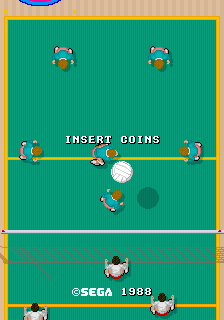
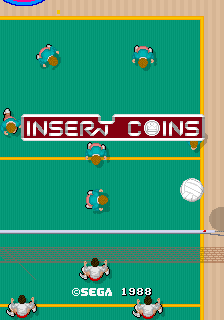
(more soon)
